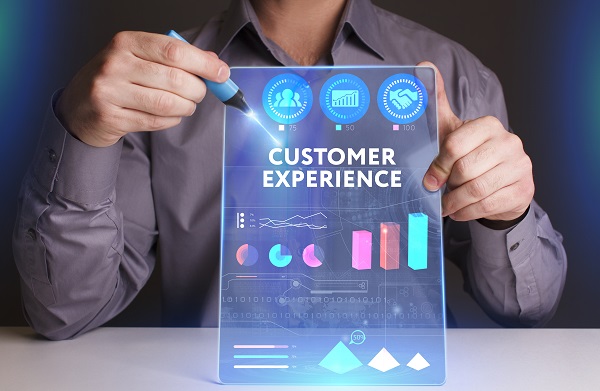 As we enter a new decade, business-to-business (B2B) customer experiences are lagging behind their business-to-consumer (B2C) counterparts. In fact, a recent customer index found that, when it comes to satisfying interactions, B2C companies could be up to 25% ahead of B2B organisations.
As we enter a new decade, business-to-business (B2B) customer experiences are lagging behind their business-to-consumer (B2C) counterparts. In fact, a recent customer index found that, when it comes to satisfying interactions, B2C companies could be up to 25% ahead of B2B organisations.
In this three-part series, NTT DATA will explore the differences and similarities between B2C and B2B customer experiences – and discuss how modern B2C methods are beginning to influence traditional B2B practices.
Developing a competitive edge
Undoubtedly, digital transformation is pushing the boundaries of customer experience, with B2C leading the way. Typical ‘shops’ are no longer the default method of purchase.
Take a walk along your local high street and it’s clear that incumbent bricks-and-mortar retailers are struggling. Indeed, it’s thought online purchases will account for 53% of total retail sales in the next decade.
The old days of brand loyalty are numbered – particularly in B2C – but this behaviour is seeping into the B2B world as well. Businesses are starting to act more like consumers in their purchasing habits.
After all, B2B customers do not exist in a vacuum – why shouldn’t they be provided with the same experiences available to them in their personal lives?
B2B organisations need to rethink how they interact with consumers, and improving customer experience is a great opportunity to develop a competitive edge.
‘Good’ customer service is no longer enough
Advancements in technology, particularly in the B2C domain, have amplified customer expectations. This means both B2C and B2B consumers are now making their purchasing decisions based on the overall customer experience – in 2020, simply ‘good’ customer service is no longer enough.
But, the difficulty for B2B companies is that they face a number of customer experience challenges that are rarely seen in the B2C space. For one, B2B engagements are usually more complex in nature with a greater number of touchpoints, meaning a longer purchasing process.
There are often many parties involved throughout the customer’s lifecycle, for example there can be multiple buyers, and the end user is often different to the person making the purchase.
Each stakeholder involved may have varying needs and requirements – leading to a fundamentally different experience. This is far less apparent in B2C, where transactions are often quick and, in the vast majority of cases, the buyer is also the user.
However, while B2B companies face some individual challenges when compared to B2C, there are certain obstacles neither can avoid.
A perfect example is that customers no longer base their loyalty purely on price or product – instead they’re drawn in and retained through the experience they receive.
The customer lifecycle
Throughout this series, our argument and point of view will be framed around the customer lifecycle – as we analyse where B2B can learn from B2C experiences.
Although there are many different versions of the customer lifecycle, we have chosen to segment ours into six crucial stages:
- Awareness – when the customer first becomes conscious of the brand’s existence.
- Evaluation – where the customer considers the brand against its competition.
- Purchase – when the customer chooses the brand and enters into the buying process.
- Retention – where the customer begins engaging with the product or service sold.
- Loyalty – when the customer is satisfied and continues to use the product or service, potentially broadening their purchases with the brand.
- Advocacy – where the customer begins to recommend the brand’s product or service to friends.
In the next post, NTT DATA will investigate the B2C and B2B customer experience, starting where most believe the story ends – at the purchase stage. We’ll also evaluate the customer experience during the retention and loyalty phases; comparing and contrasting B2B with B2C to highlight key lessons and suggest areas for improvement.
Customer experience: Why B2B needs to learn from B2C – Part 2